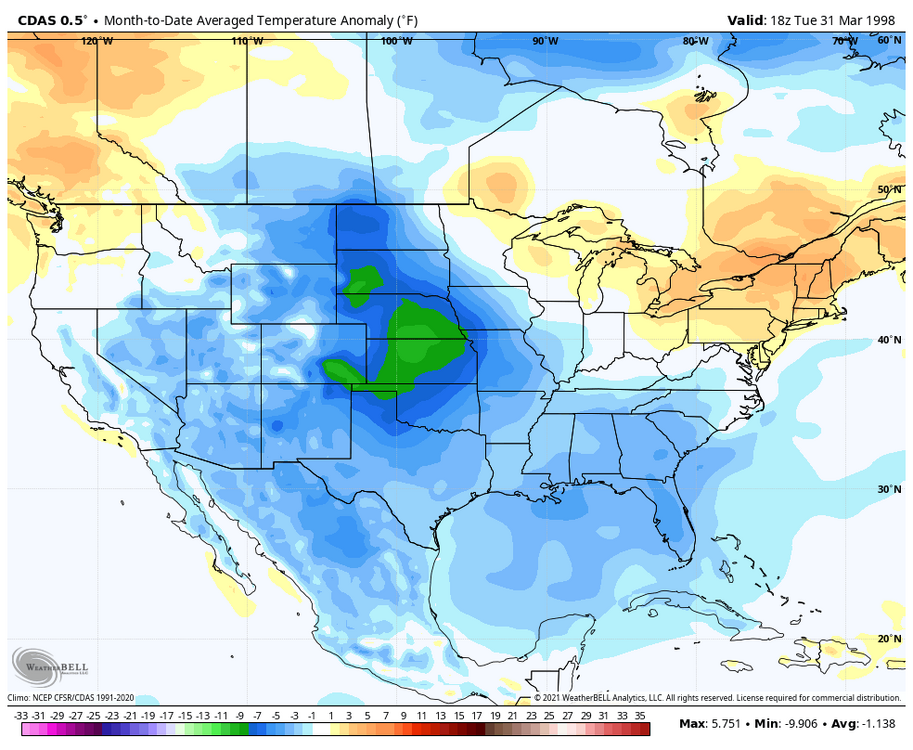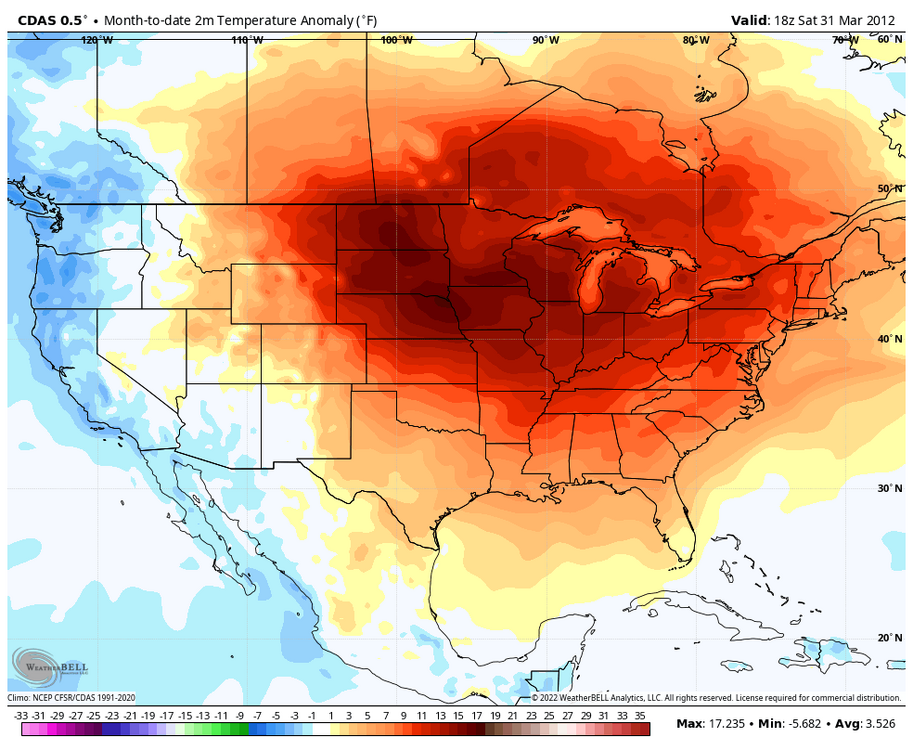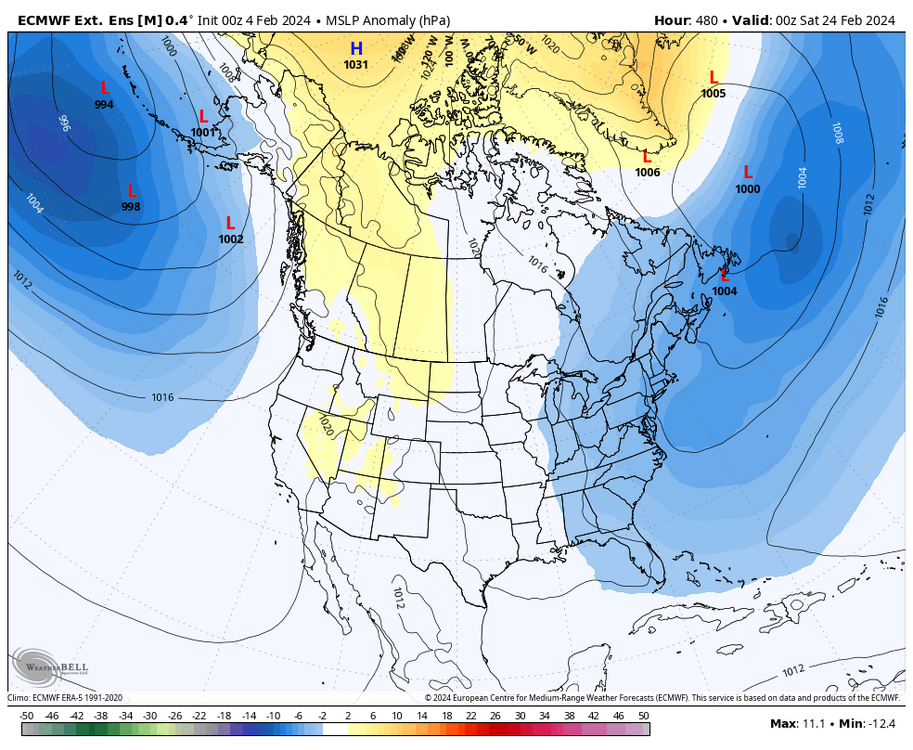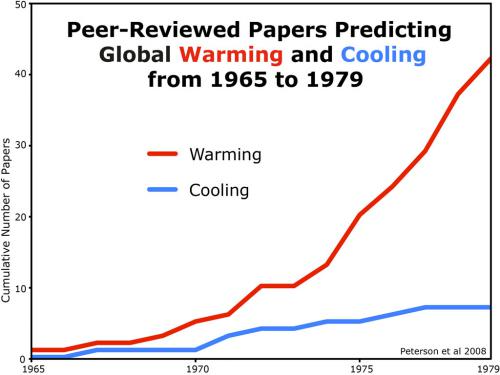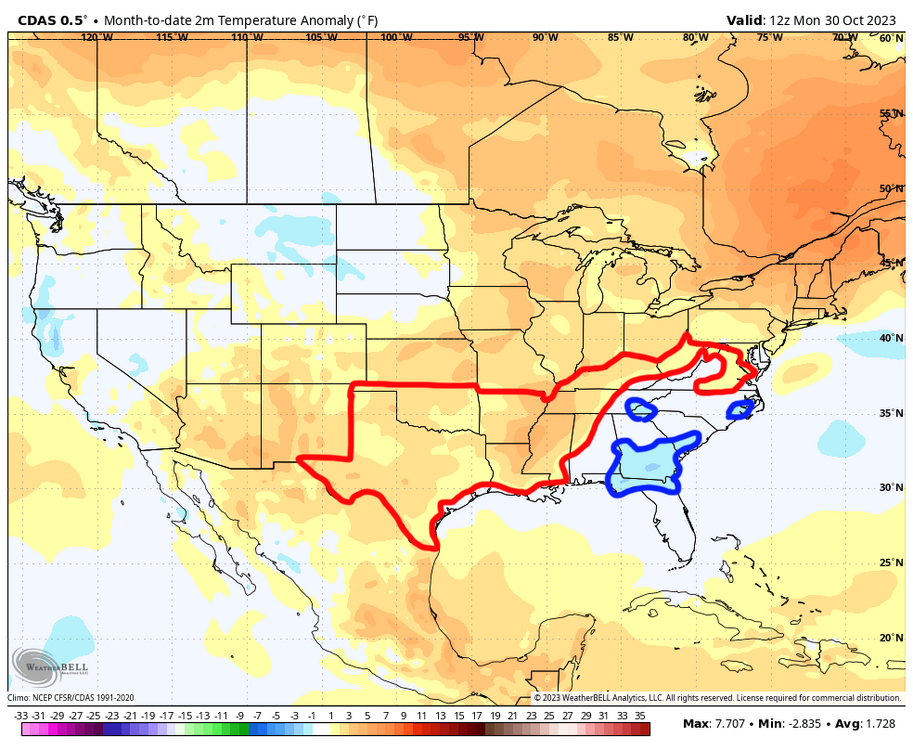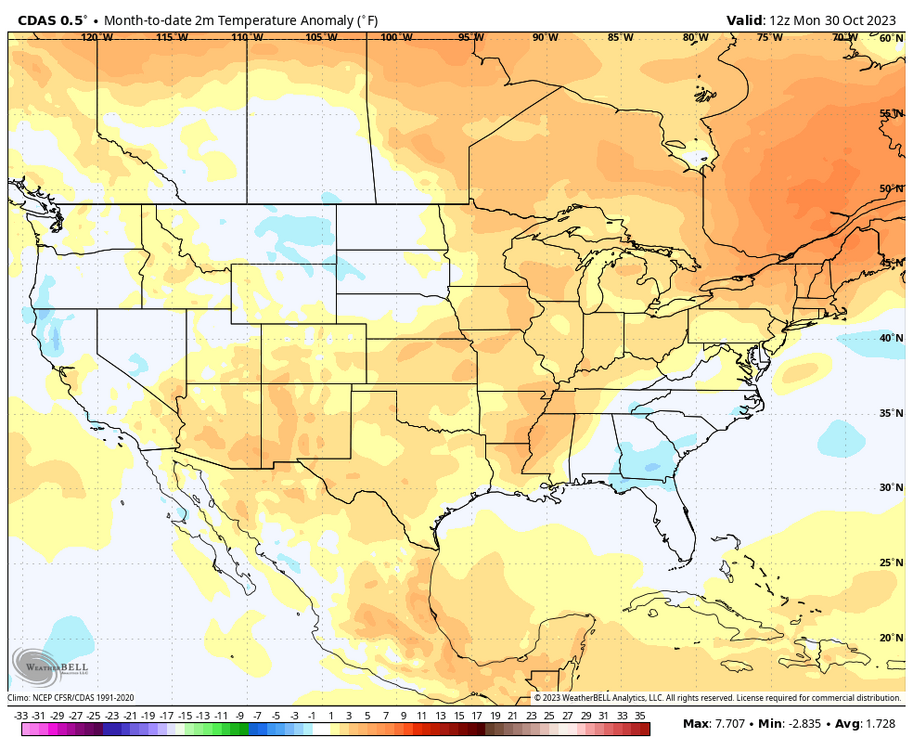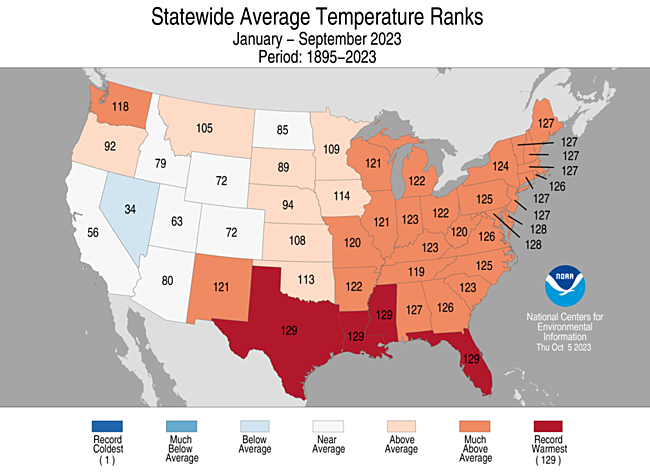-
Posts
4,944 -
Joined
-
Last visited
Content Type
Profiles
Blogs
Forums
American Weather
Media Demo
Store
Gallery
Everything posted by Cobalt
-
The entirety of the area depicted, averaged out, depicts a positive anomaly against the 1991-2020 averages. The red very obviously takes up more space on the map than the limited blue hues.
-
Yeesh, so many recent years in those charts.
-
It looks like this is referring to daily temperature records for one location, which feels way less statistically significant than a 31 day temperature average. That stripe of 1998 on the East coast might've been hit on a particularly warm day, but the month on a whole is no comparison to a March like 2012. I feel like that is worth mentioning in your post.
-
Crazy how the late February HECS loading pattern very quickly became the 2025-2026 winter loading pattern instead
-
Moderate (non-accumulating) snow atm. 2/24 storm confirmed
-

2024 Valentines Day Who the Hell Knows - Comeback Thread
Cobalt replied to DDweatherman's topic in Mid Atlantic
Georgetown snow shield working overtime -
Oh. What about the other 90%? Where does that come from?
-
That’s the one signal that hasn’t wavered. Been on the guidance since the Mesopotamian model was the go-to.
- 2,509 replies
-
- 2
-

-
- weenie fest or weenie roast?
- weenies got roasted
- (and 2 more)
-
Oh, that is definitely interesting. Has sunspot activity gone up along with the recent warming, or is it just a temporary blip unrelated?
-
Hello, I watched this video and believe I got the key points, but I was wondering, what were the key takeaways/points/arguments from the video, for you? Just making sure I'm on the same page with what you and dseagull gathered from this video. Thanks!
-
Weeklies from today are maintaining that potent storm signal centered at the 23rd/24th. From what I can tell, that signal has been there in some form on the weeklies since it was 30 or so days out.
- 2,509 replies
-
- 8
-

-
- weenie fest or weenie roast?
- weenies got roasted
- (and 2 more)
-

Jan/Early Feb Medium/Long Range Discussion Part 3
Cobalt replied to WinterWxLuvr's topic in Mid Atlantic
probably connected.. fridge doing its magic -
Low of 1F, up to 11 degrees now.
-

Jan Medium/Long Range Disco: Winter is coming
Cobalt replied to stormtracker's topic in Mid Atlantic
Euro is a snower for the 16th-17th -
Looks like @qg_omegawas only a bit off.
-
How're you feeling about this prediction so far? Looks like Central Park is running 2.0F below normal through the 15th. According to the 0z EPS it looks like they'll be running around normal for the next 7 days and then 3-5F below normal for the following 7 days to close out the month.
-

Octorcher or Roctober 2023 Discussion Thread
Cobalt replied to Damage In Tolland's topic in New England
I have, and from this quote I read this quote and gathered that you were saying the South has been cooler than their given normal for the month of October, not relative to New England or any other thing. I responded saying that hasn't been the case, and if that response had no application here then I'd like to hear what normal you were referring too. Because yeah in reference to NNE every part of the US has been substantially cooler this month, but if that's what you were trying to focus on then I think this whole discussion of "relative terms" was confusing to follow from the onset. I'd like to hear which normal you were focusing on. -
Because that idea never had consensus in the 60s and 70s. It's a common fallacy, published research from back then predicted the modern day warming rather accurately, surprisingly so for being half a century ago. In any case the thought process of "science was wrong back then so it shouldn't be taken with any credence now" is one made in bad faith. Scientific inquiry is not infallible, but the best working theories or lines of research cannot be disregarded simply because some guy was wrong 500 years ago. Even your 60s argument has no weight when comparing to the current working theory of current global temperature rise. The 60s idea never had any great backing or predictive capabilities. The best understood theory of current global temp rise has both of those things.
-

Octorcher or Roctober 2023 Discussion Thread
Cobalt replied to Damage In Tolland's topic in New England
As long as it's not a world where the defined blue area on that map is perceived to take up more area than the red, then all is well. -

Octorcher or Roctober 2023 Discussion Thread
Cobalt replied to Damage In Tolland's topic in New England
Here's a revised edit of the above WxBell map, with AN anomalies in the South boxed in red, and BN anomalies boxed in blue. Which takes up more area in the Southern states, the AN anomalies, or the BN anomalies? -

Octorcher or Roctober 2023 Discussion Thread
Cobalt replied to Damage In Tolland's topic in New England
Cooler than the Northeast or the 30yr average? That area being cooler relative to NE's record warmth is a no brainer, but the map above indicates that the South as a whole will finish above the 1991-2020 average. The small nugget of BN temps in the Southeast doesn't offset the anomalies found to the West. -

Octorcher or Roctober 2023 Discussion Thread
Cobalt replied to Damage In Tolland's topic in New England
On the whole the South has skewed AN so far this month. Maybe the next 36 hours will tip the scales a bit to the side of BN temps, but not by much. -

Octorcher or Roctober 2023 Discussion Thread
Cobalt replied to Damage In Tolland's topic in New England
That cold snap probably won't do much to change the fact that Texas (along with all but one Gulf Coast state) are on pace to see their warmest year in 129 years of record keeping. The shifting of goalposts is interesting, we're so used to record warmth that one cold snap is seen as an inexplicable event that somehow offsets all of the other positive anomalies. -
Looks like for some areas in Vermont, they are not freezing, at a point in the season where it is becoming exceedingly uncommon for such an event to not have occurred at least once already.
-
Whenever my oceanography professor mentions something related to cold/snow in our area, he prefaces it by saying "if we ever have a winter again". I feel like he'd be a perfect fit in this subforum.



